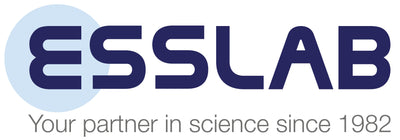Guest Blogger: Dr L. U. Ent - Chromatographer Extraordinaire

Performance Delivered
I may sound a little full of myself here, but without me you’re probably not realising your full analytical potential. Indeed, I am told that I am a critical part of your ability to generate consistent and reliable analytical measurements. I am your ion chromatography eluent, designed for use with AS22 columns. I have been formulated to optimise the selectivity and retention time between the multivalent and monovalent sample ions.
What am I used for?
Ion Chromatography eluents may be a combination of salts in deionised water that function as a buffer and to provide a stable pH environment, contributing to the separation and selectivity of components in a sample. The most common eluent is a combination of carbonate and bicarbonate, in proportions of the monovalent (HCO3−) or divalent (CO3 2-) ions for the analysis of anions.
So, why am I different to what you may have used?
I have been manufactured using exactly the same processes that allow my team to produce ISO 17034 Certified Reference Materials. I am highly homogeneous, stable, and “lean”, that is to say, my team have the ability to repeat my manufacturing process over and over and get the same results every time.
How do I work?
Typically, the pH of carbonate eluents is around pH 4 due to the carbonic acid which is formed when the eluent passes through the suppressor. At this pH with a pKa of 6.36, analytes are converted to strong acids and fully dissociated, whilst the level of dissociation is controlled by the pH of the eluent. It is only the dissociated ions that will give rise to electrolytic conductivity and detector signal response.
Is it important how I am looked after?
I am a bit particular about where I’m stored, and about Good Laboratory Practice, because it may affect the way I work. My container must be sanitised through an extensive, validated de-ionised water leaching procedure to be measurably clean, and I don’t like intrusions made by pipettes and Class A glassware that may compromise my performance standards.
How should I be used?
Current best practice advises that I am purged daily with helium, which has very low solubility in water, to provide consistency with more stability. I should also be filtered through a suitable 0.45 µm or 0.2 µm pore size filter to prolong my life, protect the column and pump from potential damage and prevent blocking of the inlet filter. In my concentrated form, I can be added to the diluent using appropriate micropipettes and clean disposable tips, followed by gentle agitation to ensure homogeneity without introduction of air. If air is mixed with eluent it will be introduced into the pump head and will result in erratic flow resulting in unstable base lines and extended retention times.
What type of filter should I be used with?
Filter selection is very important, cellulose membranes may be unstable at my pH and release contaminants which may impact your analysis. Polyethysulphone (PES) and hydrophilic PTFE filters are a good choice. I am typically prepared for use with deionised water in volumes of approximately 2 litres, having a conductivity of < 0.10 μS/cm, from stock concentrates as a simple 1:10 dilution. Deionised water usually has a final filtration step to 0.5 µm and therefore should require no further treatment apart from degassing when added.
So - how do I improve your data?
I work as part your instrument solutions team. With my co-workers, the column, the suppressor, and the detector we have everything covered.
To enable the detection of the low levels of analyte from my higher concentration’s dissolved ions, eluent conductivity needs to be suppressed. Suppressors are needed for trace analysis of anions in the low ppm range (mg/L) using conductivity detection. Suppressors enhance the signal-to-noise ratio by increasing sensitivity and reducing the background by removing eluent cations and replacing them with hydronium ions (protons), thereby neutralizing the eluent. The suppressor is thus connected downstream of the separation column before the detector to enable detection of analytes. Without the suppressor, the background conductivity is not measured by the detector - worsening the limit of detection. However, with the suppressor, there is an additional benefit of increasing the analyte ion signal, thereby improving detection limits.
As an eluent I have an elevated level of conductivity due to the level of salts. Although I am very important and have an essential role, my sheer presence can undermine the visibility of those smaller individual components within the eluate. I understand that because detection of anions in ion chromatography is mostly accomplished through electrolytic conductivity, my activity needs to be calmed down or, as my co-workers say, suppressed, to enable the detection of the low levels of analytes from my higher concentration’s dissolved ions.
So why should you invite me to be part of your analytical team?
I’m clean, consistent, and due to me being manufactured to the very highest standards, ensure your analytical measurement is carried out with consistency, without fuss and the greatest level of confidence. Additionally, with my TCT packaging I have a shelf life of up to 5 years!


Leave a comment